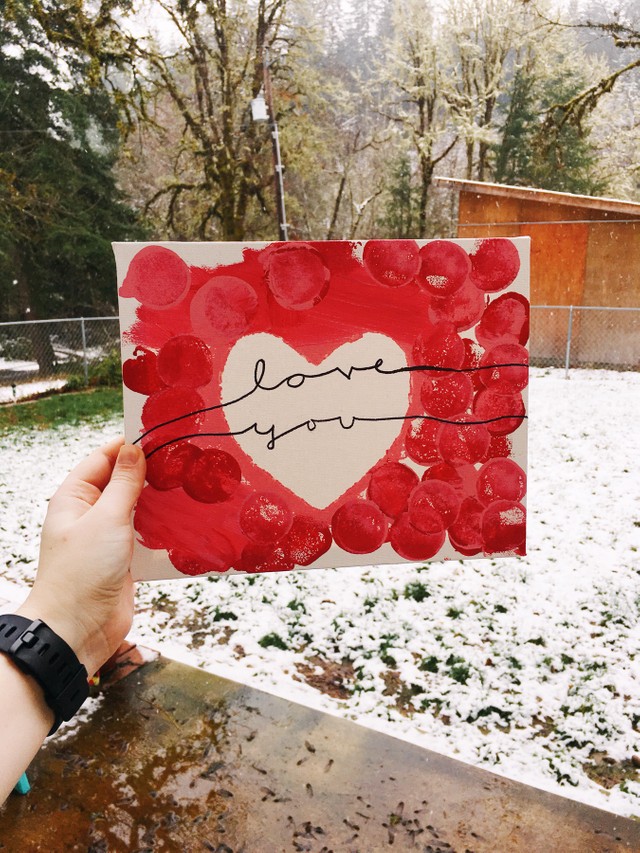A few months ago, I realized that on the days I was home all day with Forrest, he and I both got extremely bored. Like, mind-numbingly, anxiety-inducing bored. I tried to find things for us to do: trips to the park when the weather was nice, playing outside, and more, but it's hard to fill all the time in the day.
Plus, I had things I needed to get done at home. Shoving our schedule full of classes, trips, and more kept me from doing things like cleaning and finishing up the laundry.
One of my friends suggested I start doing lessons for Forrest while I was home. This friend happens to be a teacher, so planning lessons was second nature to her. Not so much for me! But I sat down with PInterest and my husband (also a teacher) to pick out some simple lessons to start doing with Forrest.
I ended up settling into a pretty good routine that helped both Forrest and I get over our boredom on rainy days and spend more time having fun together. Plus, he's learned a lot!
Since summer is rapidly approaching and I know some parents will be at home with their preschool-age children, I thought it would be handy to share my tips regarding planning simple lessons--especially if you've never planned a lesson in your life! In these tips, I'll also talk about the schedule I follow, how to decide on topics, and what supplies you need.
1. Focus on Their Strengths & Weaknesses
Every preschooler has their strengths and their weaknesses. Forrest is very verbal; he can count to around 12, knows most of the alphabet, and draws people. However, he's not great at following directions, something I wanted to work on in lessons, or trying things on his own initially. Whether your child is a whiz at numbers or prefers spending time outside learning about nature, you should tailor your lessons to revolve around not just their interests, but they things they are best at.
Here are a few sample lessons that I've done with Forrest:
- Gluing shapes to a piece of paper to create flowers
- Identifying letters along with a word that starts with that letter
- Counting the number of stickers on a sheet and using them to create a scene
Typically, I like to pick a theme for lessons to revolve around during the week. It might be Spring, or Animals, or something Forrest has recently shown interest in, like flowers or plants. I think try to think of something simple he can do that combines that theme with something like identifying letters, drawing, or counting, as those are things he enjoys doing. As time goes on, I'm going to start incorporating more challenging elements, like tracing letters and numbers.
2. Keep It Age Appropriate
Forrest will be 3 in September, so his lessons are definitely more simplistic than they would be for a 3-1/2-year-old or a 4-year-old. He's not going to be able to write letters at this point, for example; but he can count and tell me what he says, identify letters, and help glue things to paper. This was hard for me initially as I had grabbed some worksheets from online that were simply too challenging for him; he wasn't able to follow the instructions I told him and it was frustrating for both of us.
3. Collect Special Supplies
We have a special bin of paper, stickers, and other art supplies that we use only for lessons. In this bin is also our tub of kinetic sand, which is often his treat for finishing a lesson. Having special supplies that are only for "school" has helped him separate these lessons from "playing"--while still being fun. I buy most everything we use in the Target dollar section; they always have tons of stickers, stamps, and more. Right now, they have a dinosaur book with magnetic dinosaurs that I'm going to start using soon!
4. Keep It Less than 15 Minutes
This is the schedule that I follow with Forrest: at the start of every hour, we do a 15-minute lesson. That's about as long as I can hold his attention. Then, I get the rest of the hour to do one of my tasks (like cleaning the bathroom or folding laundry, fun!) or work. I try to keep lessons to 3 a day, spread throughout the day. Any more and I find Forrest gets frustrated by the end--and also it's a lot for me to plan!
Older children can definitely spend more time focused on a task on their own. But for Forrest's age, 15 minutes is best.
5. Avoid Tablets
Tablets are definitely not bad. But in terms of lessons, I find that they don't do a lot to help preschoolers learn manual dexteriority, especially when it comes to things like writing, drawing, and more. Tablets have their place, but not in lessons. This helps you also keep the exercise one-on-one; working with your child personally will help you connect with them and they'll learn more this way.
6. Stick to a Schedule
I find that the more I keep up my lesson schedule with Forrest, the more he looks forward to it. We've started talking to him about going to school and how it will be like the lessons he does with me; getting him excited to start school is very important to us (and hopefully, to you with your children as well!). Since I'm only home 2 days a week with him (plus 2 days on the weekend), we aren't doing 5-days-a-week... yet. But this summer, we will probably add 1 more day of lessons to help him get used to having more of a schedule.








